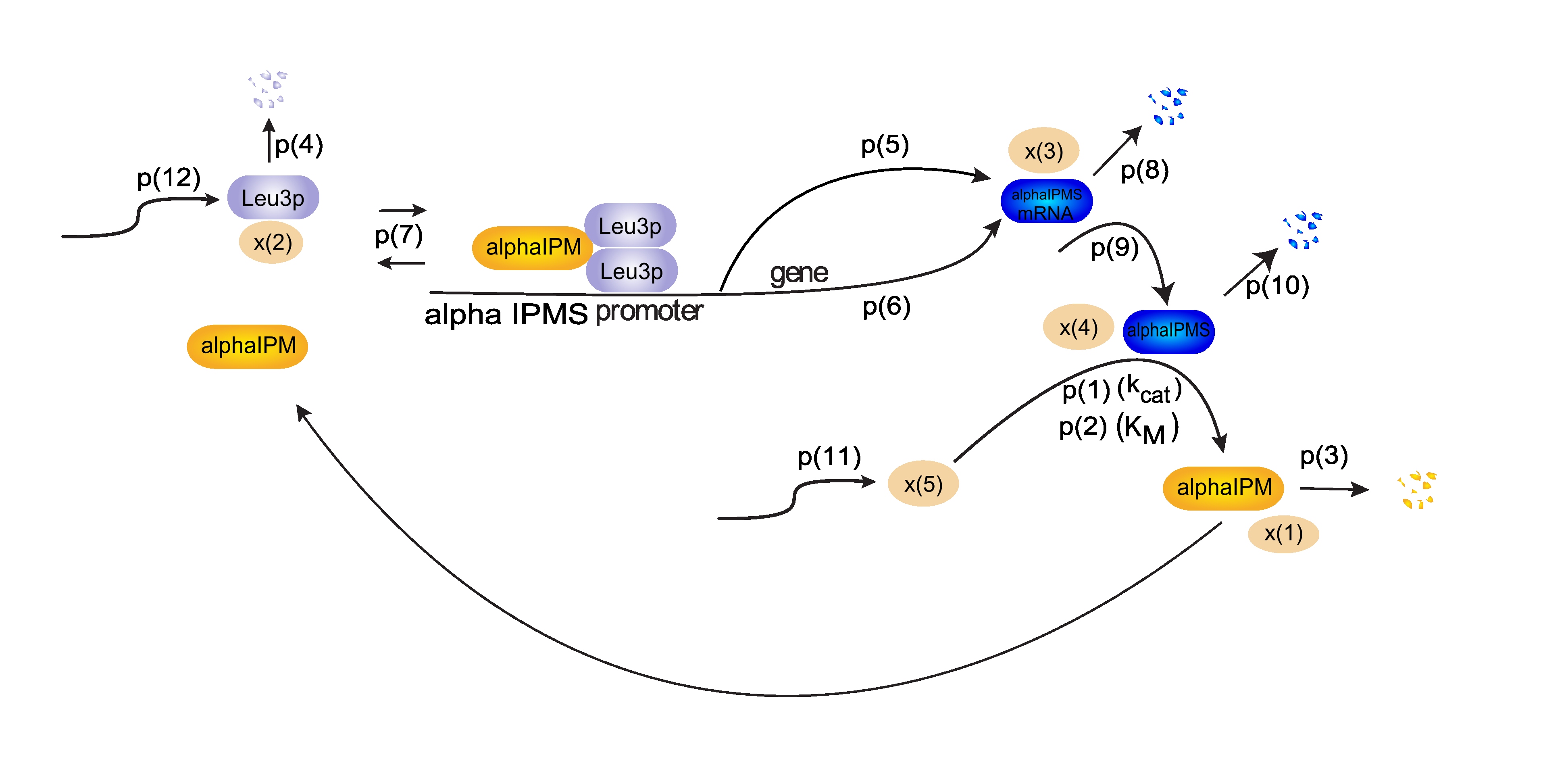Team:Wageningen UR/Project/ModelingProj2
From 2011.igem.org
(→Modeling: Fungal Track 'n Trace) |
|||
| (22 intermediate revisions not shown) | |||
| Line 1: | Line 1: | ||
| - | < | + | <html> |
| + | <head> | ||
| + | <style type="text/css"> | ||
| - | { | + | ul li a.currentlinkfungus2m { |
| - | + | color: black !important; | |
| + | } | ||
| - | + | ul li a.currentlinktop3 { | |
| + | color: #63a015 !important; | ||
| + | } | ||
| - | [[File: | + | </style> |
| - | ( | + | </head> |
| + | <bod> | ||
| + | </body> | ||
| + | </html> | ||
| + | |||
| + | {{:Team:Wageningen_UR/Templates/Header}} | ||
| + | {{:Team:Wageningen_UR/Templates/NavigationTop1}} | ||
| + | == Modeling: Fungal Track 'n Trace == | ||
| + | {{:Team:Wageningen_UR/Templates/NavigationLeft3}} | ||
| + | {{:Team:Wageningen_UR/Templates/Style | text= __NOTOC__ | ||
| + | |||
| + | [[File:Spee_FTnT_Model-1_WUR.jpg|600px|center]] | ||
| + | |||
| + | The Leu3p (x(2)) dimer blocks transcription from the alpha-IPM synthase (alpha IPMS) promoter. Alpha-IPM (x(1)) binding to this dimer releases it from the promoter and enhances the transcription rate. p(5) and p(6) model both constitutive expression and the transcription rate increase upon alpha-IPM binding. From alpha-IPMS mRNA (x(3)) the protein is formed, modelled by p(9). Alpha-IPMS (x(4)) enzymatically produces alpha-IPM, which is then incorporated in the beginning of this loop again. Intercellular transport of alpha-IPM creates a signal transduction through a hypha. | ||
| + | |||
| + | Additionally, x(5) is required for modelling the enzymatic reaction. Its formation is described by p(11). Each type of molecule has also been assigned a degradation constant, such as p(8) for x(3). | ||
| + | |||
| + | }} | ||
Latest revision as of 20:20, 21 September 2011
 "
"



